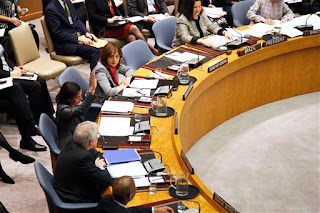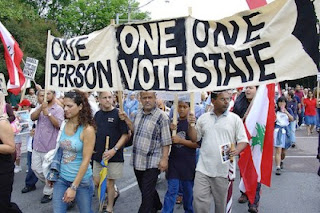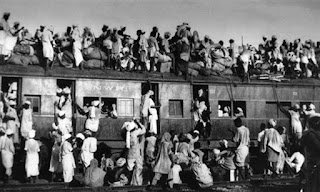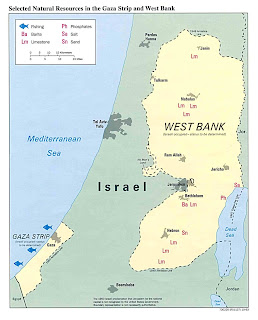The
Second World War ended in 1945 with a big bang made by two nuclear bombs.
Seventy-two years later we continue to live in the shadow of that war.
World
War Victors
United
Nations Security Council is the UN arm responsible for world peace and
security. It can pass resolutions to condemn the unacceptable behaviour of
nations, order UN sanctions, send peacekeeping forces, or announce UN military
actions. These resolutions, once passed, are binding on all UN members, and
there are 193 of them. However, five members; USA, UK, France, Russia and China
enjoy special powers called ‘veto’. A ‘no’ from any one of these countries
means the resolution is sent to the dustbin. Why do they have such an
extraordinary privilege? Because they won the Second World War.
The
Axis powers- Germany (Hitler), Italy (Mussolini) and Japan (Emperor Hirohito)
were soundly defeated. USA (Truman), UK (Churchill), USSR (Stalin) and China
(Chiang Kai-Shek) declared themselves as the four policemen for future global
peace. At Churchill’s insistence, France, a fellow colonial power, was added to
this exclusive club. These five countries are the only ones allowed to freely and
officially develop, build up, proliferate, test and use nuclear weapons. An
equally devastating weapon in their possession is veto power.
The
Veto Power
UK
and France haven’t used a veto since the end of the Cold War. Before that, UK
primarily used it to protect the interests of the ruling Whites in South
Africa. Since 1970, China has used it 11 times, USSR/Russia 23
times and the USA 79 times. Veto power makes these countries immune
to any UN actions or criticism. When the USA invaded Panama (1989), the
USA/UK/France blocked the resolution to condemn the USA and order withdrawal of
its forces. Similarly, when Russia attacked Georgia (2009) and took over Crimea
(2014), UN could neither condemn nor act because Russia vetoed the resolutions.
In theory; USA, Russia, China, UK and France can - with impunity - invade other
countries, indulge in war crimes, or commit genocides and the UN Security
Council can’t even condemn them.
The
great powers, the bullies who won the Second World War, can also protect their
“clients” by use of a veto. This month, on 12 April, Russia blocked a UN
resolution to condemn Assad over the chemical gas incident, just as it has
vetoed every resolution on Syria since 2011. Not surprisingly, the UN can’t
condemn, impose sanctions, begin UN military action or punish Assad’s regime in
any manner. Syria is Russia’s client.
Since
1982, USA has used its veto power on 32 occasions to block resolutions concerning Israel. All attempts of UN to declare sanctions
or initiate action to remove illegal settlements have been frustrated by the
USA veto. Not only that, USA has blocked all UN attempts to bring Israel’s
nuclear arsenal on the International Atomic Energy Agency’s agenda. Israel is
America’s client.
America’s
Israel obsession
Since
World War II, Israel is the largest recipient of US Aid, having received more
than 140 billion USD. Currently, it receives 3 billion USD per annum, equivalent
of a 500 USD per year subsidy to each Israeli citizen. (Another 38 billion US
Dollars are committed in aid between 2019-2028). In addition, the USA promises
to raise 500 million $ per annum for joint US-Israeli missile defense programs.
*****
In
May 1998, I was attending an international conference in the UK. At the
breakfast table I was surrounded by my colleagues, many of them British and
Americans. India’s nuclear tests the previous day were the headlines in the
British newspapers. I was the only Indian in that gathering. I remember some of
them looking at me with scorn, as if I was responsible for the crime of testing
a nuclear weapon. One British guy had the nerve to ask me if I was not ashamed.
I said I am a pacifist, and denounce all weapons. However, I denounce
discrimination and double standards as well. I’m glad, I said, that India has
reduced the possibility of you guys launching a nuclear attack against us.
This
hypocrisy continues, as we have seen in the last few years, with Iran and North
Korea. One country’s privilege is another country’s crime.
Against
this backdrop, is it not strange that we rarely hear about Israel being a
nuclear state? Israel has nuclear capacity for more than fifty years, having
conducted its first tests in the 1960s. In fact, Iran, over the years, has
attempted to develop nuclear capabilities because of the nuclear Israel.
*****
Israel
is the USA’s most pampered protégé with financial aid, diplomatic support (veto
power) and secret backing for its nuclear programme. What could be the reasons
for such an obsession?
During
the Cold War, one could argue such support was justified. Syria and Egypt were
Soviet clients. To counter that, America thought Israel to be the right base in
the Middle East. Israel is modern, fairly prosperous and the only country in
the Middle East that may be called a western democracy.
Once
the Cold War was over, the War on Terror began. America’s military
establishment always needs a long-term enemy for its survival and growth. Islamic
terrorism replaced communism as America’s arch-enemy. USA and Israel share that
enemy (their combined effort possibly created Islamic terrorism, but that’s
another issue). However, this collaboration doesn’t excuse Israel’s occupation
of the West Bank and East Jerusalem, its unstoppable illegal settlements, its
inhuman blockade of the Gaza strip. Also, Israel’s actual help in any Middle
East war is minimal. It is the USA which has taken upon itself the job of
protecting and subsidizing Israel. That
support is vastly disproportionate to what the USA gets out of it.
An
obsession practised for a long time turns into an Obsessive Compulsive Disorder
(OCD). The OCD patient can’t control the obsession, even when he knows it’s
wrong. As I write these words, the American senate has published a letter to
the UN secretary-general signed by each of the 100 senators individually. The
letter complains about the UN’s anti-Israel bias, agenda, and actions of
certain UN bodies reinforcing anti-Semitism. The US Senate urges the UN to
improve UN’s treatment of Israel. UN should eliminate or reform funds and
committees that criticise Israel. Ask UNESCO to not criticise Israel and stop
doubting the Jewish and Christian connection to Jerusalem. UN’s Human Rights Council
(UNHRC) targeting Israel must stop. It’s worth reading this letter in its entirety to understand America’s OCD with Israel. Writing a letter to the UN
demanding better treatment of Israel was the most important item for one
hundred US senators on the 100th day of Trump in office.
Israel’s
position
Israel,
full of clever and intelligent people, has conceived a brilliant equation.
Criticism
of Israel = Anti-Semitism
This
equation has been propagated worldwide, and anybody criticising Israel’s policy
or America’s supporting it is reminded of the historical persecution of Jews
and the holocaust. The above letter also threatens the UN with this equation.
Israel’s
position is very clear and unambiguous. Israel wants for itself every inch of land
between the Jordan River and Mediterranean Sea. It would love for all
Palestinians from the West Bank and the Gaza Strip to disappear by magic. It’s
a difficult task in the 21st century; earlier they could have been killed
or expelled. Israel’s strategy is to keep the Palestinian territories occupied,
continue building of settlements, raise Iran as a bogey, lobby the USA for
continued support, give lip service to the universal condemnation and in case
of a rare US criticism, sulk and build more settlements. Israel prefers to live
with a chronic virus rather than go for an unpleasant surgery.
In
February, Donald Trump took a U-turn on the two-state solution, and asked
Netanyahu to sort out the issue with the Palestinians. Trump said he likes
the solution both parties like. A bully and his victim go to the school
director. The school director tells the bully and the victim to sort out the
bullying problem themselves.
South
Africa and Israel
The
reason the US senators united to write a letter to the UN was a UNHRC report applying
the word apartheid to Israel. I can imagine Netanyahu, on reading the
report, calling Trump’s son-in-law Jared Kushner angrily. Kushner immediately demanding
Nikki Haley (the US ambassador to the UN) write a protest letter, and reminding
the senators that not signing such a letter would be tantamount to
anti-Semitism.
Indeed,
using the word apartheid to the Israel situation would be a devaluation of that
word. Israel, inside its boundaries, has a democratic framework. One fifth of
its population is Arabs who mingle with the Israelis and have several legal
rights. In the occupied territories, West Bank and Gaza, Israel can be accused
of segregation but the intent seems to be land-grabbing rather than racial
apartheid.
However,
the South African case is important when we talk of a solution to the
Israel-Palestine conflict. South African apartheid was so inhuman and blatantly
cruel that most of the world had boycotted and isolated them. From 1973 to
1988, for fifteen valuable years, USA and UK (and on some resolutions France)
used their veto power to block every UN resolution demanding action against
South Africa. USA and UK continued trading with South Africa to preserve their
business interests. The White rulers of South Africa needed protection from
black masses intent on resisting apartheid. Nelson Mandela was portrayed as a
Marxist and imprisoned for 27 years. In the Cold War years, it was important
for Reagan and Thatcher to ensure South Africa doesn’t turn communist.
Once
America understood the imminent collapse of communism, it lost interest in
South Africa. USA’s withdrawal of support spelt an end to the apartheid.
Mandela was released and became the first black president.
South
Africa’s outgoing president F.W.de Klerk said: “I apologise in my capacity
as leader of the NP to the millions who suffered wrenching disruption of forced
removals; who suffered the shame of being arrested for pass law offences; who
over the decades suffered the indignities and humiliation of racial
discrimination.”
Adriaan
Vlok, the outgoing law minister, washed the feet of apartheid victim Frank
Chikane (whom Vlok had plotted to assassinate earlier) in an act of public
apology for the wrongs of the apartheid regime.
Despite
the whole world sensing the injustice and cruelty in South African apartheid,
it continued from 1948 to 1991- for forty four years, partly due to the
diplomatic support of the U.S. through its veto power.
Israel
Palestine solution
Israel
or Palestinians are incapable of resolving their problems, because one is a
settler colonialist and the others are in the occupied territory. The UN is
incapable because of the veto power wielded by the World War II victory. United
States of America is the only party which can resolve the issue. South Africa
is not the only case study. USA (Clinton) withdrew its support for Suharto, the
Indonesian dictator, and East Timor became independent quickly.
Though
many analysts think the one-state solution as the only possibility, I disagree.
If two-state solution is improbable, one-state solution is impossible. For Jews
to live as a minority in a Jewish state is an oxymoron. Arabs outnumbering the
Jews in a single state is a much bigger existential threat for Israel than a
nuclear Iran. In my view, the one-state solution is an impractical fantasy.
If
not for the USA veto shield, the two-state solution could have happened long
ago. At the end of the Cold War, USA withdrew support for many client states.
At some point, USA will realise the folly of continuing the War in the Middle
East. Maybe that point will be reached when oil loses its historical
importance. When that happens, USA simply needs to withdraw its support to
Israel, stop giving aid and stop using its veto protection. Israel will then be
forced to abandon all the settlements, accept a new Palestinian State, accept the
partition of Jerusalem, free the Gaza strip. If the unimaginable could happen
in South Africa, it also can in Israel.
That
point, though, is unlikely to be reached while Donald Trump is the president of
the USA.
Ravi
Select
Bibliography
Jewish
virtual library: Anything you need to know from Anti-Semitism to Zionism. The
Jew perspective. By American-Israeli Cooperative enterprise (AICE)
In
defence of Zionism and Israel
The
Israel Lobby and U.S. Foreign policy. An interesting document that says how the
Jewish lobby in the US has systematically made the two countries the closest
friends.
In
this New York Times op-ed from last month, Benjamin Portgrud, a black South African
who lives in Jerusalem, compares South Africa and Israel and says Israel is no
apartheid state.
Occupation,
colonialism, Apartheid? A re-assessment of Israeli practices in the occupied
Palestinian territories under international law.
Noam
Chomsky: lecture at the Brown University: US Israeli crimes against
Palestinians
A
strong-worded letter signed by all 100 senators on 27 April, 2017 asking UN to
not criticize Israel.
R.











